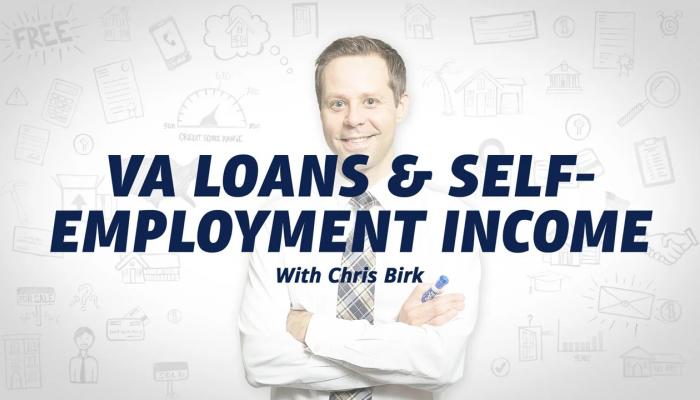For many Veterans and service members, the VA loan is a great path to homeownership, offering advantageous terms and financial benefits not readily available through conventional mortgages.
One essential step in the VA loan process is prequalification. But what exactly does it mean to prequalify, and why is it a crucial step for those interested in leveraging the benefits of a VA loan? Let’s take a closer look at how to prequalify for a VA loan.
Can you prequalify for a VA loan?
Yes, prequalification is the initial step in the VA loan process and is generally quite simple. It provides an estimate of how much you might be able to borrow based on the information you provide to the lender.
You can think about loan prequalification as a “first interview” of sorts. Prequalification helps lenders achieve three main goals:
- Assess a borrower’s service and credit eligibility
- Estimate the loan amount a borrower may obtain
- Begin gathering documentation needed for preapproval and loan underwriting
The prequalification process also holds key benefits for prospective borrowers. It’s a non-binding step you can take with multiple lenders, which will help you compare rates and terms. It’s typically a 10-minute conversation.
Prequalification Credit Check
With your permission, lenders conduct what’s known as a “hard inquiry” to obtain your current credit scores. A hard credit inquiry can ding your credit score, although it’s typically only a few points, if any. When you’re shopping for a mortgage, the credit bureaus won’t count every hard inquiry against you. Instead, they’ll typically consider all lender inquiries within a 45-day period as one single check, which minimizes any harm to your credit and allows you to comparison shop.
The VA doesn’t have a built-in credit score to qualify for this program. But it’s important to remember the VA doesn’t make home loans. Instead, it basically provides a form of insurance on behalf of qualified borrowers. It’s ultimately up to lenders, like Veterans United, to decide whether to make a home loan.
Because lenders take on most of the risk with each loan, they’re allowed to introduce requirements and standards that go beyond what the VA wants to see. You’ll often hear these additional requirements called “overlays.” A credit score cutoff is among the most common.
Different lenders can have different credit score requirements. You may also need a higher score if you’ve experienced a recent bankruptcy or foreclosure or if you’re seeking a jumbo loan. Generally, a 620 FICO score is a pretty good barometer for VA lenders.
In addition, any co-borrowers on the loan would also need to meet the lender’s credit score requirement.
If you’re purchasing in one of the nation’s nine community property states, lenders can consider your spouse’s credit and debts even if he or she won’t be on the loan.
VA Prequalification Process
Along with checking your credit, lenders will also seek to learn more about your employment, your income and your overall financial and homebuying goals.
Different lenders may take different approaches to the prequalification conversation. But it’s common for loan originators to ask you about:
- Your desired loan amount
- Your current and previous employment
- Your gross (pre-tax) monthly income
- Your assets, like bank accounts and retirement funds
- Your monthly liabilities (day-care costs, child support, alimony, etc.)
- Any previous bankruptcies, foreclosures or judgments
- Any delinquencies or defaults on federal debts
- Whether you’ve recently owned a home
Lenders will also get a good look at your major monthly debts from your credit report. They’ll use those and the income information you provide to calculate an initial debt-to-income (DTI) ratio. For VA loans, this key mortgage industry metric looks at your monthly debts in relation to your overall monthly income.
They’ll calculate this figure based in part on the loan amount you’re seeking. And that means flexibility can be important for prospective borrowers whose DTI ratio is on the edge. Depending on the lender’s requirements and your unique situation, you may need to seek a lower loan amount to get a workable DTI ratio.
The VA typically wants to see a DTI ratio of 41 percent or less. But it’s possible to go above that and still secure financing. Lenders will usually have their own maximum allowable DTI ratio. Low credit and high DTI ratio are two of the most common reasons why some prospective buyers are unable to get prequalified.
» CALCULATE: Calculate your VA Loan savings
If Your Credit Scores Fall Short
So, what happens if you don’t meet a lender’s credit score cutoff? While some lenders may allow for compensating factors, others might simply send you packing if you fail to meet their credit score requirements. Veterans United takes a different approach.
We created an entire department dedicated to helping service members, Veterans and military families improve their credit and get on the path to loan prequalification.
If we're not able to prequalify borrowers, they have the opportunity to work with the credit experts in our Lighthouse Program®.
Our Lighthouse Program® consultants:
- Identify and help you correct errors on your credit report
- Establish a plan to strengthen your overall financial profile
- Develop personalized objectives to reduce debt
This is a free service open only to Veterans, service members and military families. The Lighthouse Program® has helped more than 30,000 Veterans and service members overcome their credit challenges and go on to close on a home loan.
Why get prequalified?
By going through prequalification, buyers can identify and start working on potential financing or VA eligibility roadblocks. Does your credit score fall a bit short? Is your income likely to be a problem?
Prequalification is the time to isolate and start addressing these issues. Once you’ve been prequalified for a VA home loan, the next step is loan preapproval.
Related Posts
-
 Small Business Income and VA LoansIt's possible for Veterans using small business income to secure a VA home loan but they may encounter challenges due to income verification requirements, especially if their businesses are less than two years old. This article outlines the obstacles and provides guidance on how Veterans can navigate the process of using small business income to qualify for a VA loan.
Small Business Income and VA LoansIt's possible for Veterans using small business income to secure a VA home loan but they may encounter challenges due to income verification requirements, especially if their businesses are less than two years old. This article outlines the obstacles and provides guidance on how Veterans can navigate the process of using small business income to qualify for a VA loan. -
 Getting A VA Loan Using Self-Employed IncomeIf you’re a self-employed VA borrower, you should be prepared to do a bit more work when it comes to verifying your income and providing proper documentation to support your business. While crucial for confirming your loan eligibility, these verification policies vary depending on the lender.
Getting A VA Loan Using Self-Employed IncomeIf you’re a self-employed VA borrower, you should be prepared to do a bit more work when it comes to verifying your income and providing proper documentation to support your business. While crucial for confirming your loan eligibility, these verification policies vary depending on the lender.

